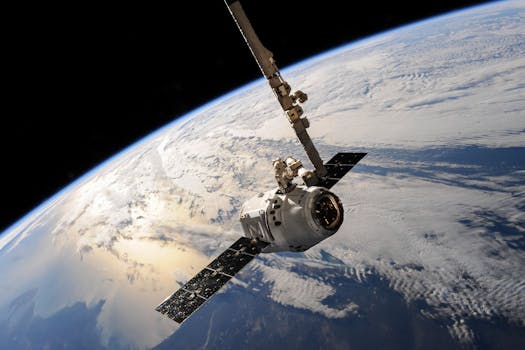The Future of Satellites: Revolutionizing Global Connectivity
The future of satellites is poised to revolutionize global connectivity, enabling faster and more reliable communication services. With advancements in space technology, satellites are becoming increasingly important for various applications, including navigation, remote sensing, and communication.

The Future of Satellites: Revolutionizing Global Connectivity
The future of satellites is poised to revolutionize global connectivity, enabling faster and more reliable communication services. With advancements in space technology, satellites are becoming increasingly important for various applications, including navigation, remote sensing, and communication. In this article, we will explore the current state of satellite technology, its future prospects, and the potential impact on global connectivity.
Current State of Satellite Technology
Satellites have been in use for several decades, providing a range of services, including television broadcasting, telecommunications, and navigation. However, the current state of satellite technology is limited by several factors, including the high cost of launching satellites into space, the limited bandwidth available for communication, and the risk of signal interference. Despite these limitations, satellites continue to play a vital role in global connectivity, enabling communication services in remote and underserved areas.
Future Prospects of Satellite Technology
The future of satellite technology is expected to be shaped by several factors, including advancements in space technology, the increasing demand for global connectivity, and the growing need for reliable and secure communication services. One of the most significant developments in satellite technology is the emergence of low-Earth orbit (LEO) satellites, which are designed to provide faster and more reliable communication services. LEO satellites are expected to play a key role in the development of 5G networks, enabling the provision of high-speed and low-latency communication services.
Another significant development in satellite technology is the use of satellite constellations, which involve the deployment of multiple satellites in a single orbit. Satellite constellations are expected to provide global coverage, enabling the provision of communication services in remote and underserved areas. The use of satellite constellations is also expected to reduce the cost of launching satellites into space, making it more affordable for companies and organizations to provide global connectivity services.
Potential Impact on Global Connectivity
The future of satellites is expected to have a significant impact on global connectivity, enabling faster and more reliable communication services. The use of LEO satellites and satellite constellations is expected to provide global coverage, enabling the provision of communication services in remote and underserved areas. This is expected to have a significant impact on various industries, including healthcare, education, and finance, enabling the provision of critical services in areas where they are needed most.
The future of satellites is also expected to enable the development of new technologies, including the Internet of Things (IoT) and autonomous vehicles. The use of satellites to provide communication services for IoT devices is expected to enable the development of smart cities and smart homes, while the use of satellites to provide navigation services for autonomous vehicles is expected to enable the development of self-driving cars.
Conclusion
In conclusion, the future of satellites is poised to revolutionize global connectivity, enabling faster and more reliable communication services. With advancements in space technology, satellites are becoming increasingly important for various applications, including navigation, remote sensing, and communication. The use of LEO satellites and satellite constellations is expected to provide global coverage, enabling the provision of communication services in remote and underserved areas. As the demand for global connectivity continues to grow, the future of satellites is expected to play a critical role in enabling the development of new technologies and improving the lives of people around the world.




